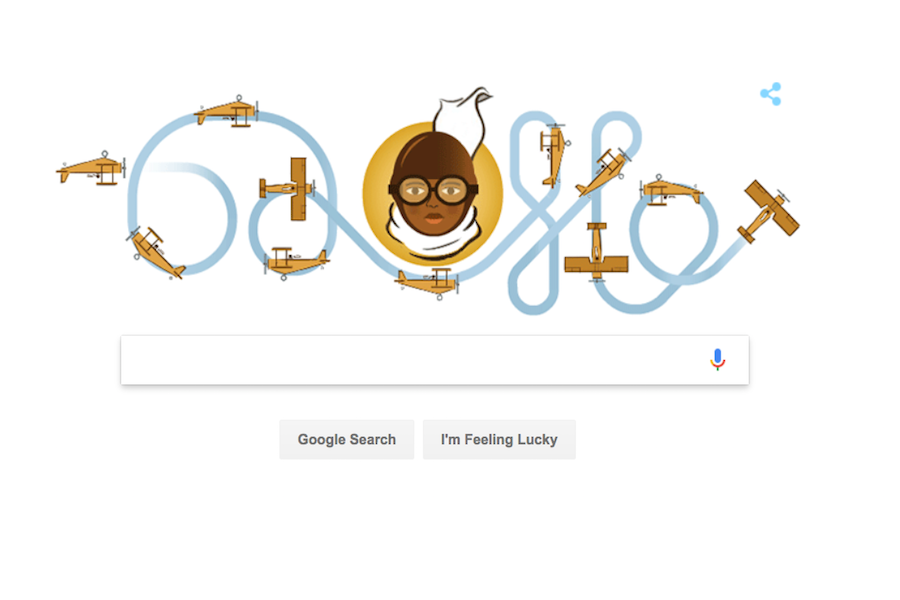'An American legend': Google Doodle celebrates aviator Bessie Coleman
Loading...
When Bessie Coleman took to the skies, she shattered racial and gender barriers. And she didn’t stop there, using her fame to inspire others.
On Thursday, which would have been the pioneering aviator’s 125th birthday, Google Doodle honors the first African-American and native American woman in flight. In the center of the doodle is Ms. Coleman, aviation goggles on, her scarf flapping in the wind. Around her, a small plane traces out the word "Google," its loops and flips reminiscent of those Coleman performed at air shows across the country.
In her lifetime, Coleman inspired others to take up flying and challenge racial barriers. Through the Google Doodle, which appears on Google’s homepage in the US and various other countries, her story of dreams and determination may reach a new audience – and take on a new life.
Since 2000, when the first Google Doodle appeared in honor of Bastille Day, more than 2,000 doodles have been created to celebrate significant events, including holidays and anniversaries. The focus of the doodles: "to celebrate interesting events and anniversaries that reflect Google’s personality and love for innovation."
Coleman embodied that innovative spirit. She was driven to "amount to something," according to the Atlanta Historical Museum's website in her honor, and she pursued that dream against all odds.
Born in 1892, she grew up in eastern Texas. Her parents worked as sharecroppers, and she attended a segregated school in a one-room shack that often lacked paper and pencils. By the time she was 10 years old, her father had left the family, so Coleman served as a surrogate mother to her three younger sisters, taking care of the home and family while her mother was at work.
Despite her obvious aptitude for school, she was able to attend only through eighth grade – and a shortage of funds caused her to drop out of college after one term.
Moving to Chicago at the age of 23, she worked as a beautician and in a chili parlor, saving her money to fuel her dream. Encouraged by her brother, who teased that French women were superior because they knew how to fly, she decided to become a pilot.
At a time when few American women of any race became pilots, Coleman set her sights on the skies. She withdrew her savings and secured additional financial backing from two African-American entrepreneurs. When American flight schools refused to teach her on account of her race, she set off for France.
In seven months, she completed a ten-month course with the prestigious Fédération Aéronautique Internationale, becoming the first African-American to gain a civilian pilot’s license. She was also the only woman of the 62 candidates to earn an FAI license during that six-month period.
Returning to the US, she was fêted by the media, and – following advanced training in France – went on to perform at countless air shows over the following five years. She was outspoken on civil rights issues, refusing to perform unless the crowd was unsegregated.
Her dreams didn’t stop there. She planned to open a flight school and offer the training US operators had denied her to the next generation of pilots, working as a beautician on the side to raise the necessary capital. She saved up to purchase her own planes.
Though Coleman died in a plane crash in April 1926, her legacy lives on in the pilots she inspired. In 1977, a group of African-American women pilots founded the Bessie Coleman Aviation Club. Inducted into the National Aviation Hall of Fame, she was also featured on a stamp in 1995, commemorating her as "an American legend."
"Bessie Coleman continues to inspire untold thousands even millions of young persons with her sense of adventure, her positive attitude, and her determination to succeed," the Chicago City Council wrote in a resolution requesting that stamp.








